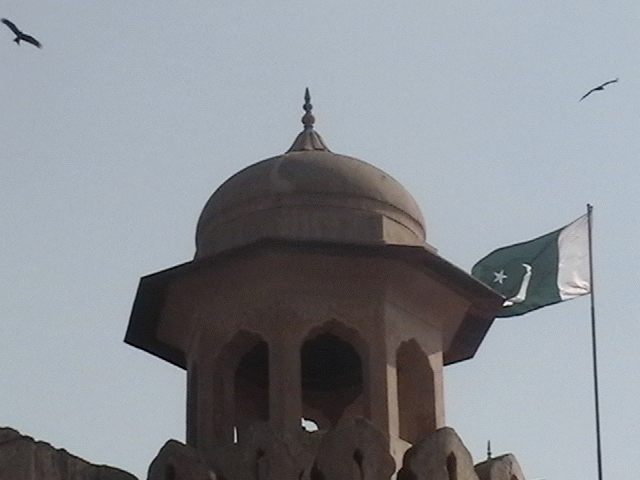
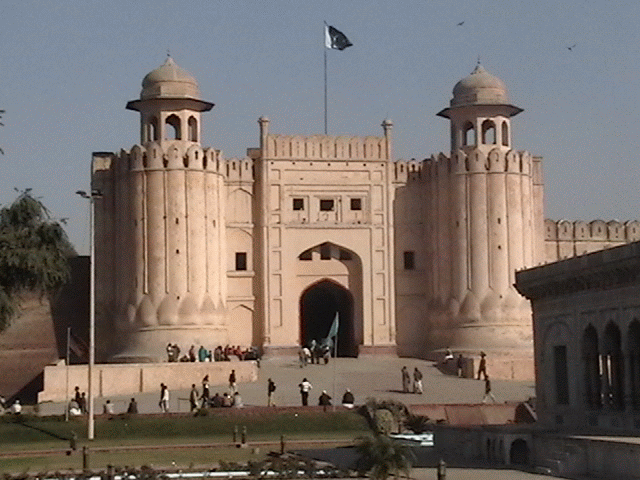
Lahore has been seat of every successive government in India and specially the Punjab. Therefore one comes across a plentiful of structures and monuments that dot the landscape of Lahore. But two specimens of Mogul architecture cannot escape the eye of anyone entering Lahore from Rawalpindi on the Grand Trunk Road; the Badshahi Mosque and the Shahi QIlla or the Royal Fort.
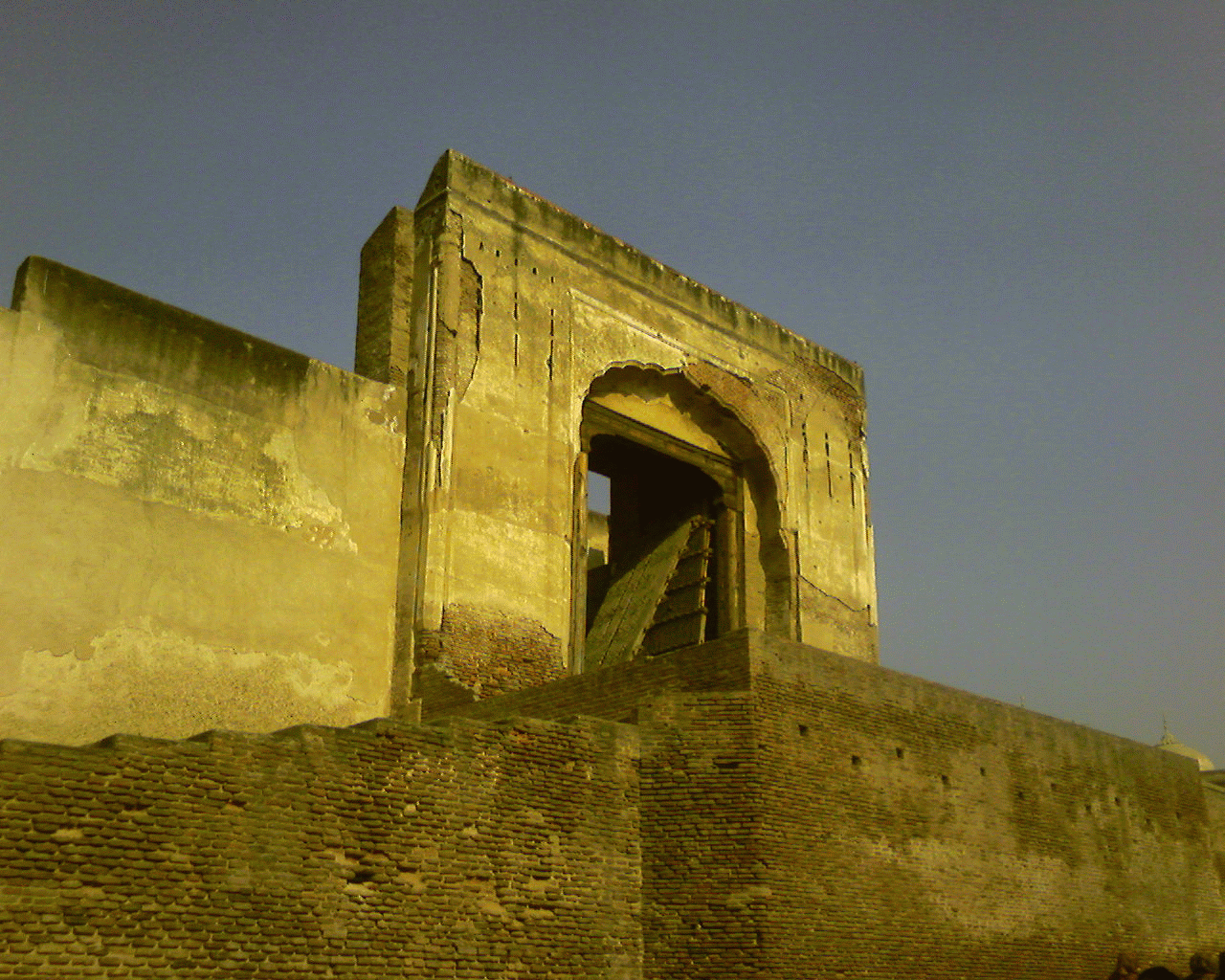
The fort was initially constructed in 1566 AD by the Mughal Emperor Akbar, on the ruins of a mud fort which existed as early as 1021 AD. The Fort is rectangular and is located in the north western corner of Lahore, adjacent to the Walled City. It has 13 gates. The main gates are located alongside the centre of the western and eastern walls. Located centrally in the city of Lahore, the Lahore Fort is a magnificent fortified palace complex. Its elaborate Mughal architecture is straight out of a storybook of the Mysterious East. The impressive twin-domed entrance leads into elaborately decorated courtyards and pavilions with water features, some with still intact sumptuous wall decorations of inlaid semiprecious stones and painted designs. It's large enough to allow several elephants carrying members of the royal family to enter at one time. There are a flight of stone steps specially built for ceremonial elephant processions.
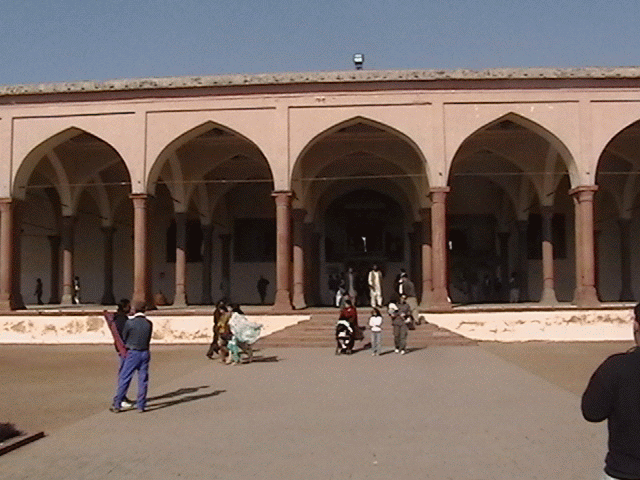

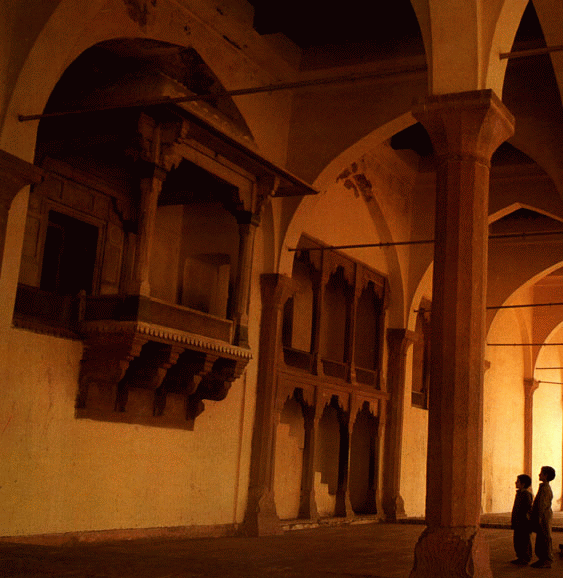 The fort as it stands today is not what it was when it was initially constructed in 1566. Every successive Mughal emperor besides the Sikhs, and the British added a pavilion, palace of wall to the Fort. Jahangir, Shah Jehan and later Aurangzeb added modifications of massively fortified walls. Akbar got the Diwan-i-Aam (Hall for Commoners) built in the traditional Iranian style, all constructed in red sand stone imported from Rajistan. Shah Jahan also constructed the Diwan-e-Khas, that overlooked Ravi, in 1631-the same year he started the Taj Mahal. Shah Jahan also constructed Moti Masjid (Pearl Mosque) and his own sleeping chambers. Emperor Jahangir extended the gardens and constructed the palaces in the Jehangir's Quadrangle.
The fort as it stands today is not what it was when it was initially constructed in 1566. Every successive Mughal emperor besides the Sikhs, and the British added a pavilion, palace of wall to the Fort. Jahangir, Shah Jehan and later Aurangzeb added modifications of massively fortified walls. Akbar got the Diwan-i-Aam (Hall for Commoners) built in the traditional Iranian style, all constructed in red sand stone imported from Rajistan. Shah Jahan also constructed the Diwan-e-Khas, that overlooked Ravi, in 1631-the same year he started the Taj Mahal. Shah Jahan also constructed Moti Masjid (Pearl Mosque) and his own sleeping chambers. Emperor Jahangir extended the gardens and constructed the palaces in the Jehangir's Quadrangle.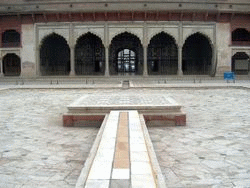
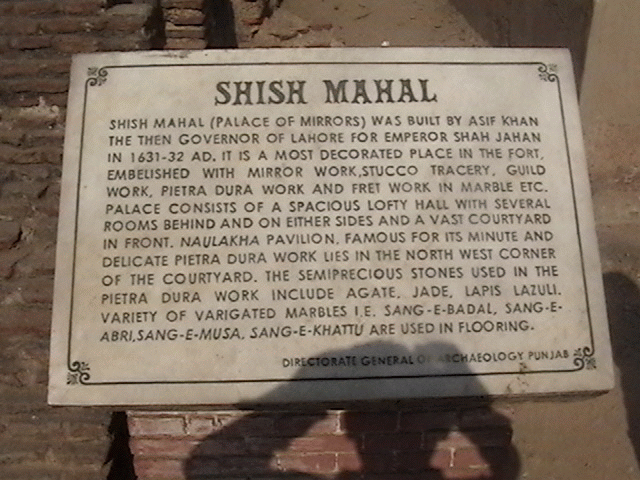
The famous Sheesh Mahal (above left) or Palace of Mirrors, located in the north-east corner of the fort, is the most beautiful palace in the fort and is decorated with small mirrors of different colours set. Sheesh Mahal was constructed by Shah Jahan in 1631. The Sheesh Mahal is the luxurious place of resort particularly during summer months with rest rooms of a long hall at its either end, opening on to the brilliantly dazzling Veranda that looks at the marble paved quadrangle with a fountain in the middle side.
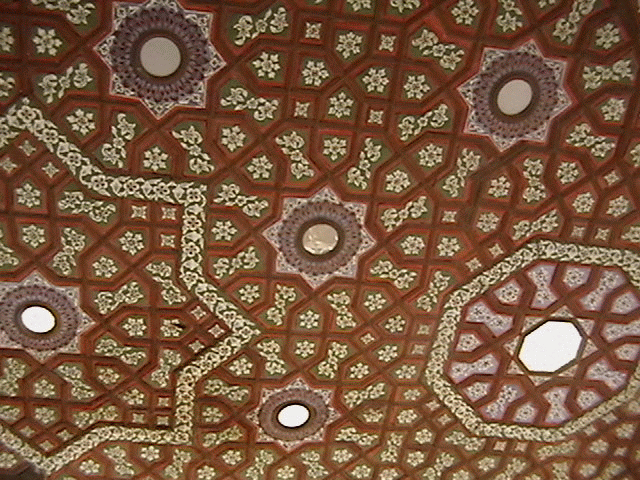
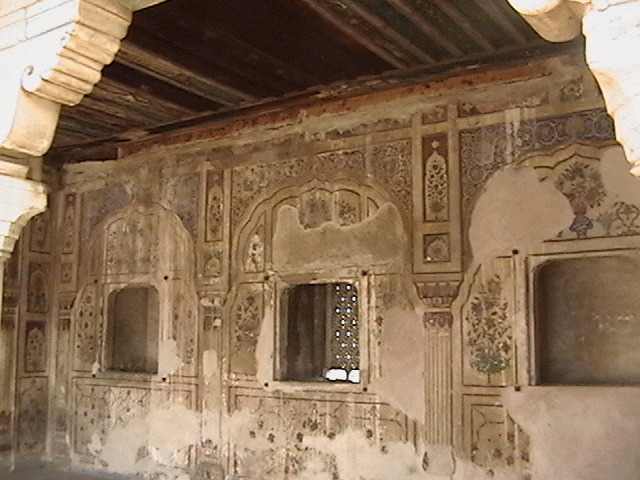
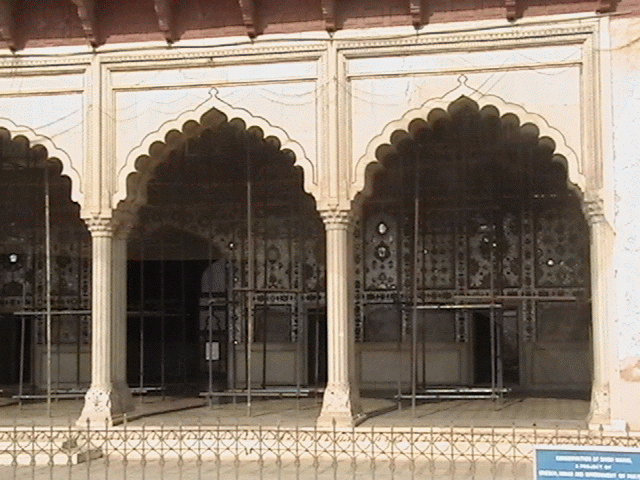
The mirror reflects the stars and the bedrooms presents, in its ceiling, the panorama of a star lit Sky. The exterior wall of the Sheesh Mahal one can see the beautiful mosaic paintings that depict everyday sport of the Mughal princes for the enjoyment of the people who used to gather below the fort not only to have a view of the emperor sitting in the Jharokha but also to admire the brilliance of colours on the wall.
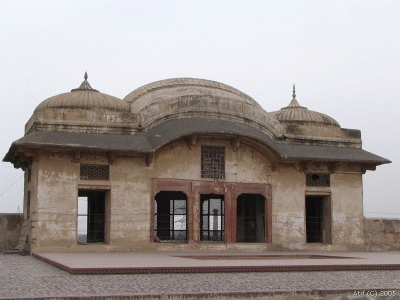
Here one can observe galloping horses, humped camels, elephant ride, hunting scene, animal fights, horse man plying polo, camel fights, figures of angels, demon head sand moving clouds, horse and elephant riders crossing Swords and verities of floral and geometrical designs. From Sheesh Mahal one can have a magnificent view of the Badshahi Masjid built by Aurangzeb on a spot regained after the river Ravi shifted further away and the Minar-e-Pakistan.
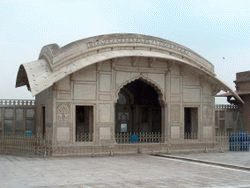
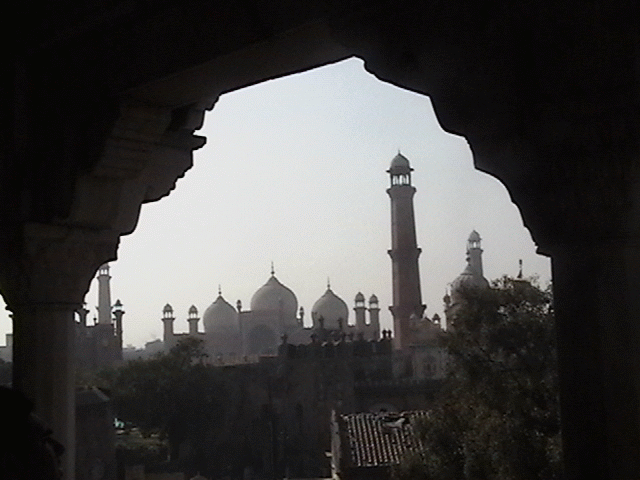
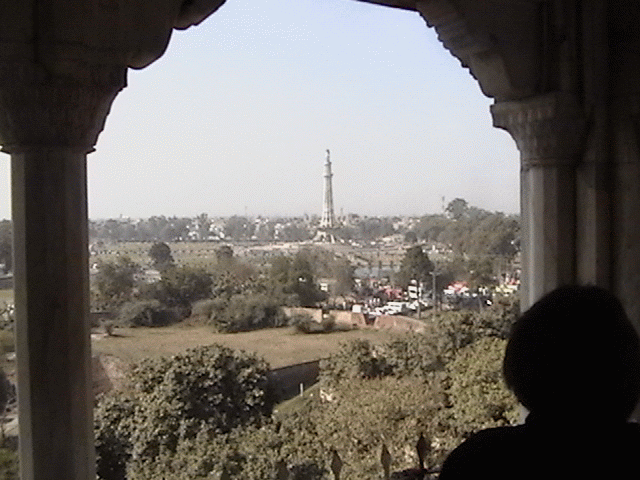
Left to Right: Naulakha Pavilion - View from Sheesh Mahal (Badshahi Mosque - Minar-e-Pakistan)
The Nau-Lakha Pavilion (above left) is a marble building located at the Sheesh Mahal courtyard. Its western face provides a panoramic view of the ancient city of Lahore. It was also built by the Shah Jahan in 1631 A.D. at a cost of Rs.900,000, an exorbitant amount at the time. It is therefore called Nau - Lakha as it in Urdu means 'worth 9 lakhs' (one lakh equals 100,000). The brilliance of its precious stone outshone the natural setting of flowers and tree leaves that decorate the walls. Ranjit Singh during his occupation of Punjab had his rest rooms built over the present building of Sheesh Mahal. However, the original building could not bear the additional weight and over a period of time, cracks start to appear in the main building of the Sheesh Mahal. In order to preserve the this magnificent building, recently the upper chambers have been demolished and presently, a major renovation work is in progress to restore the grandeur of the mahal.
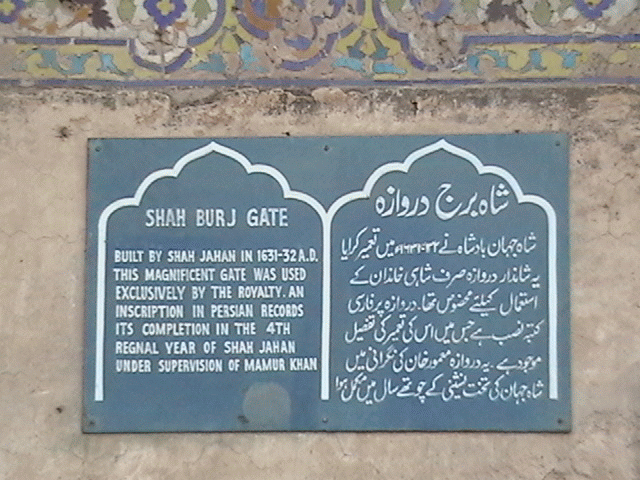
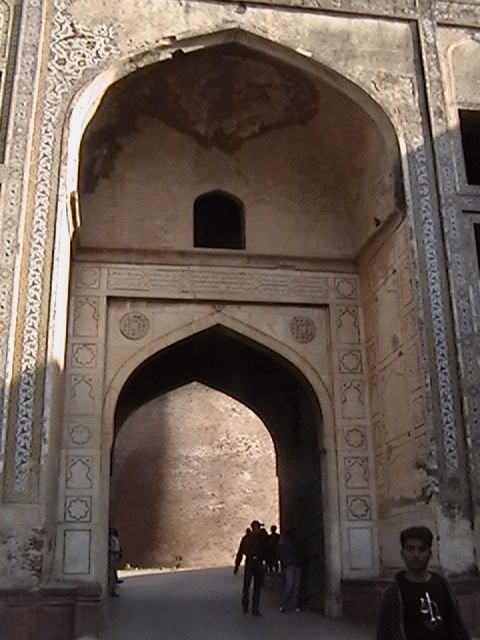
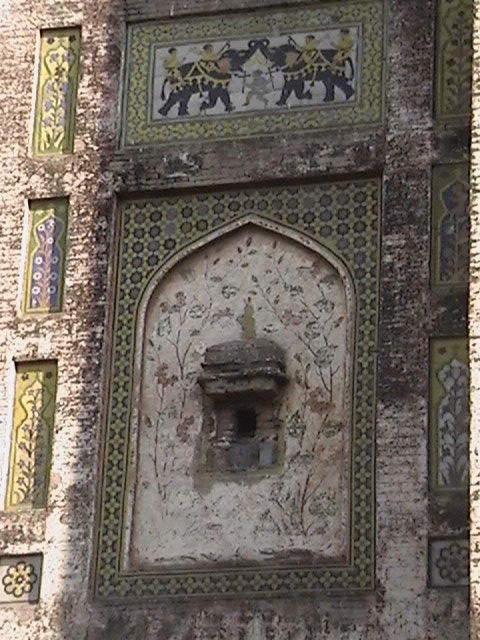
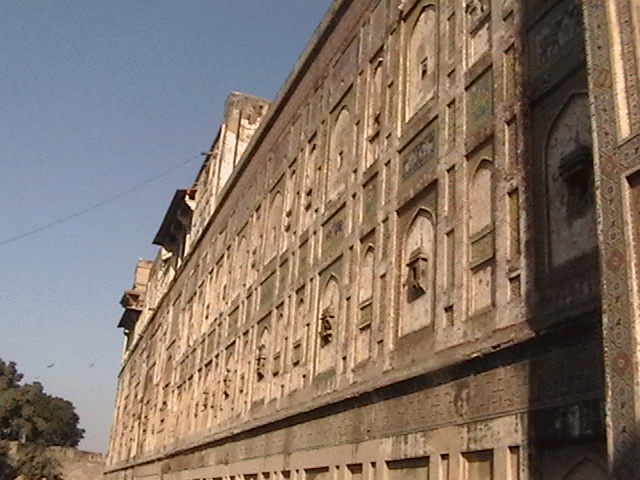
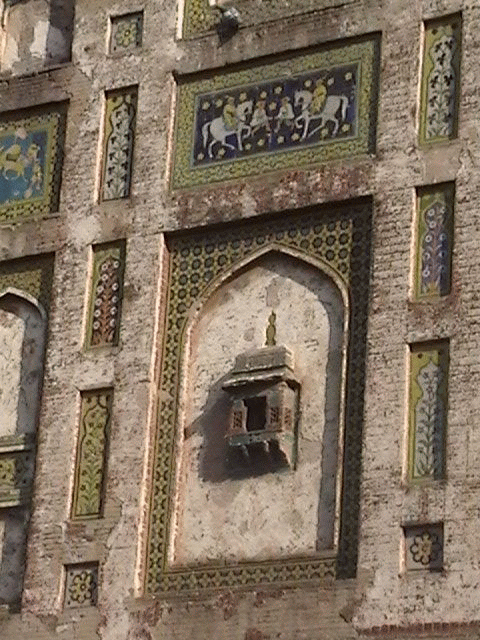
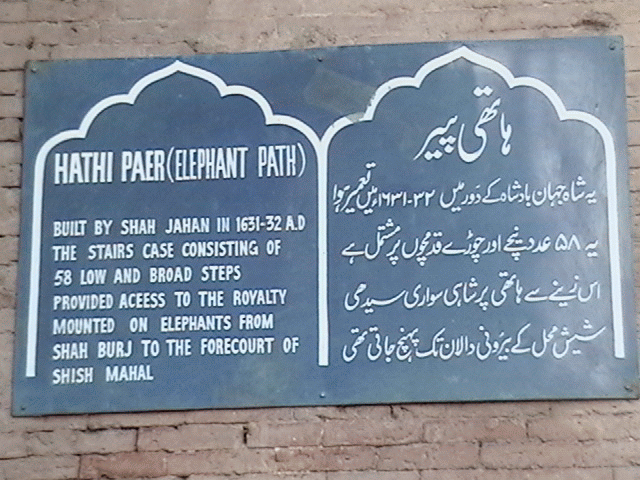
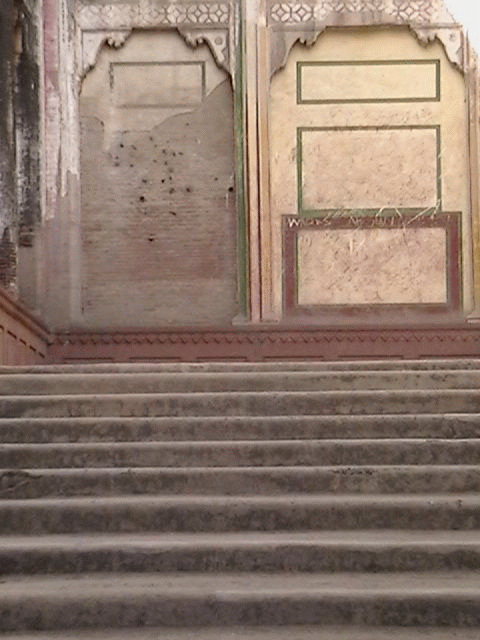
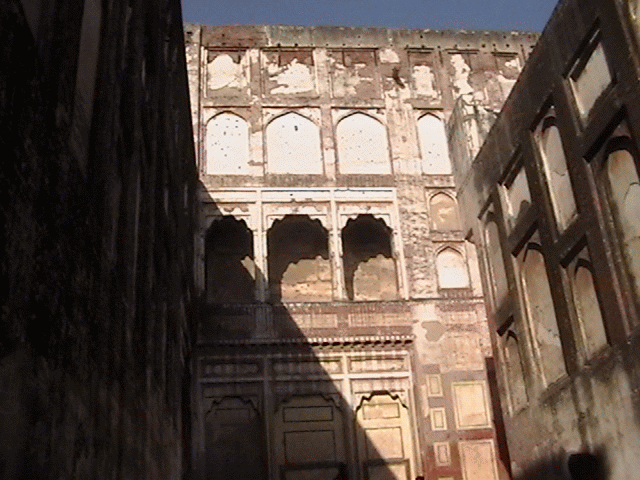
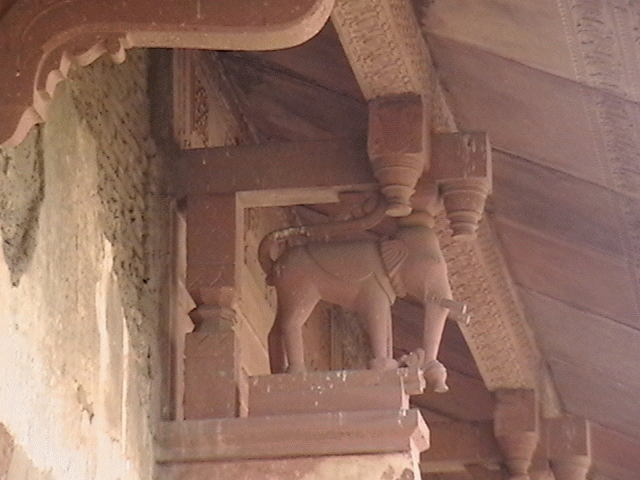
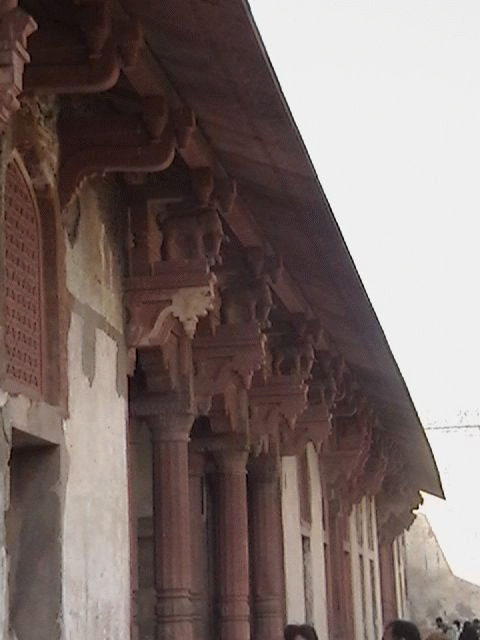
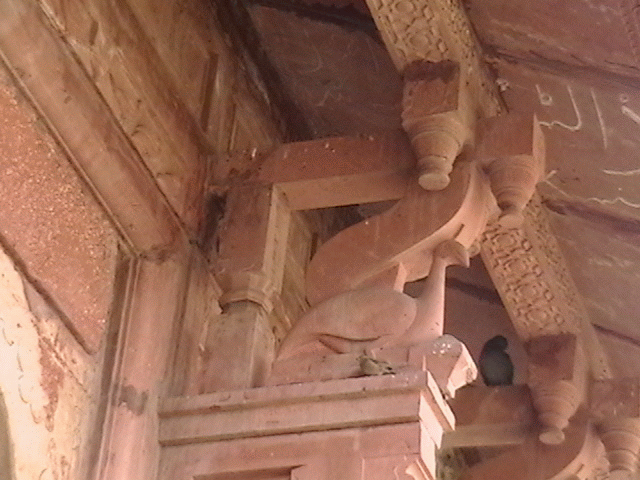
The stone columns each with a different mast atop displaying the aesthetics of its builders
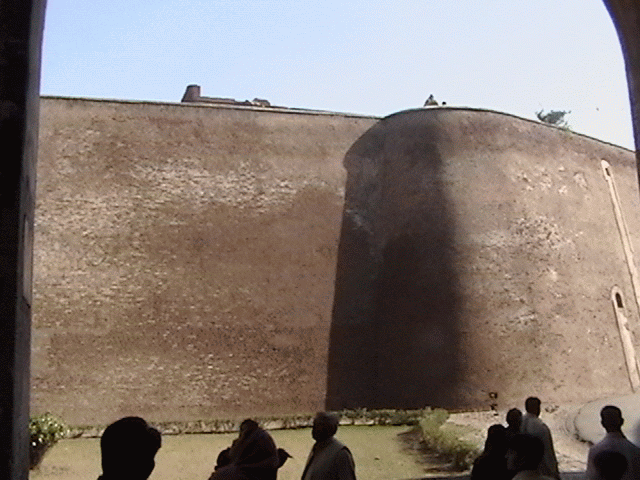
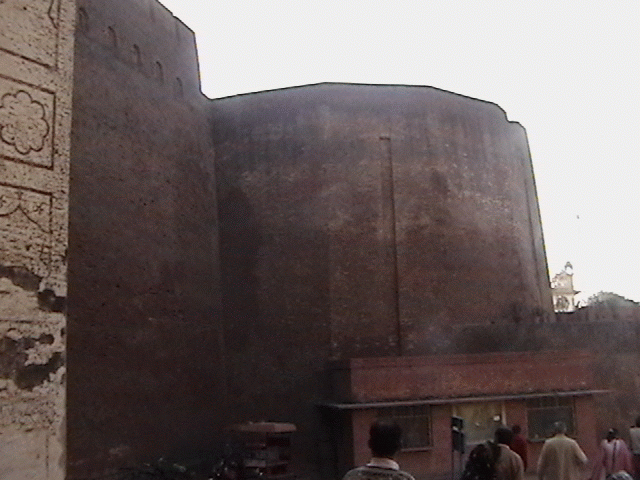
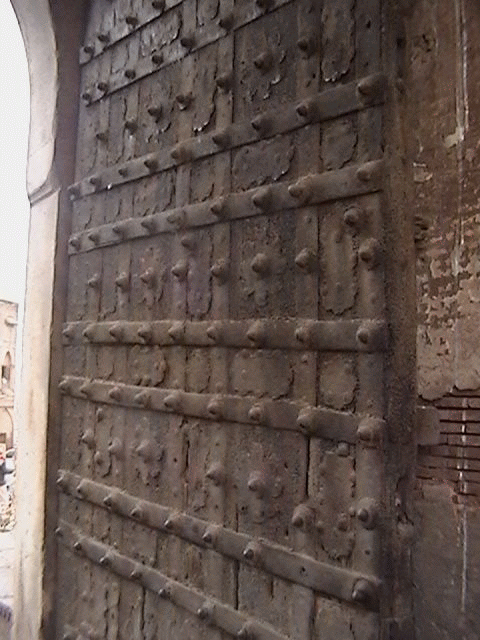
You have a good point here!I totally agree with what you have said!!Thanks for sharing your views...hope more people will read this article!!!
ReplyDeleteparc esta condominium